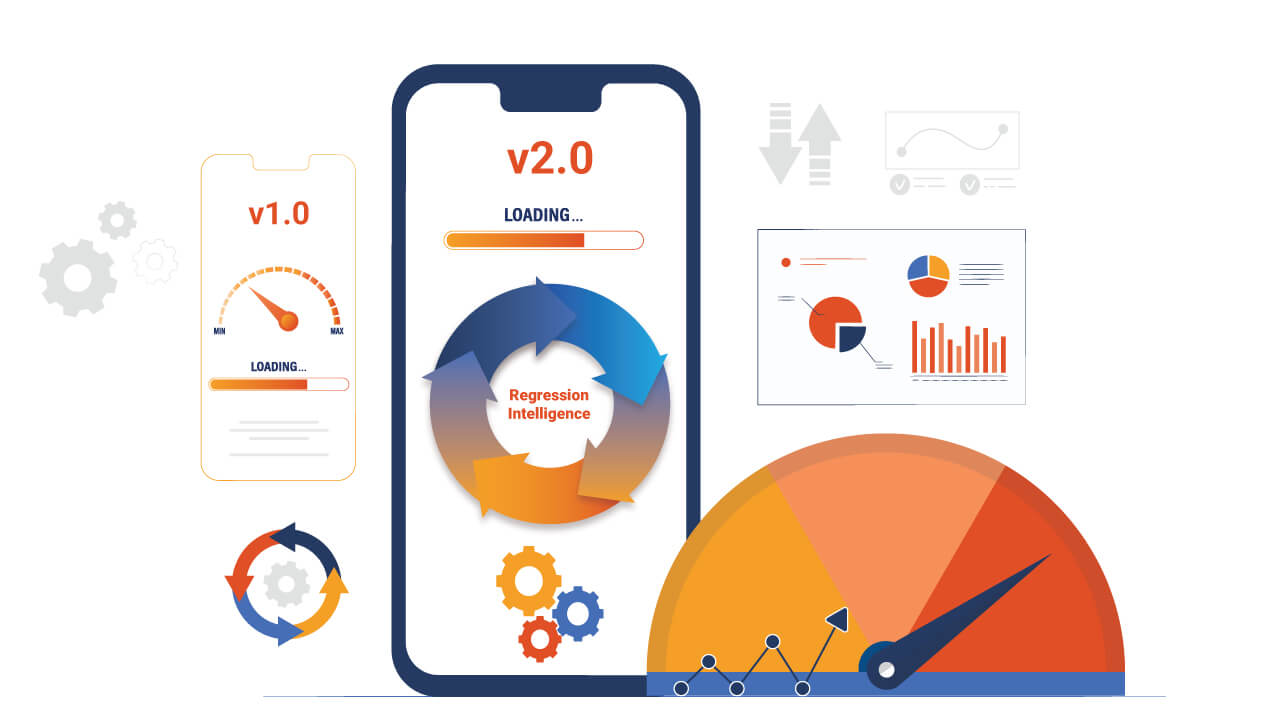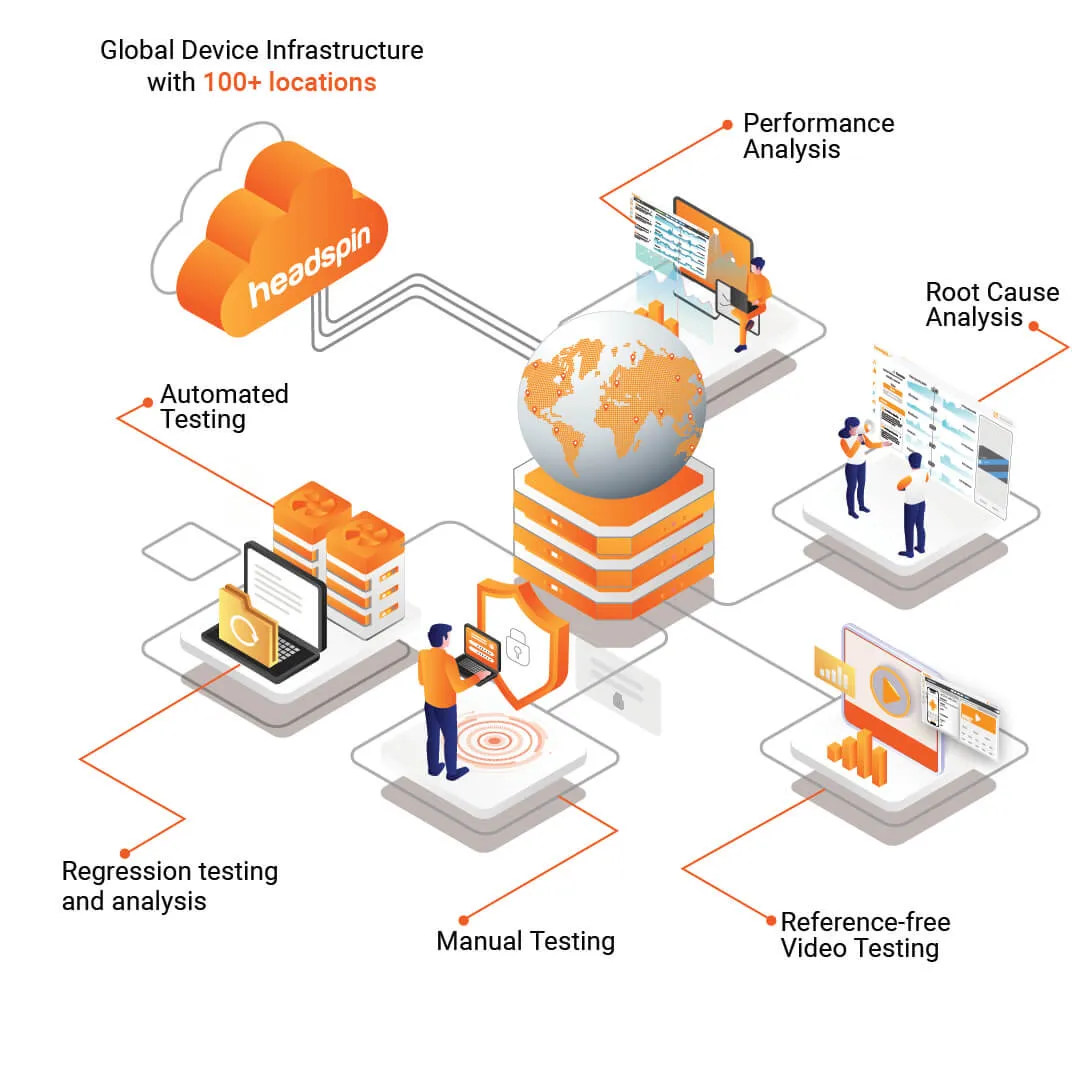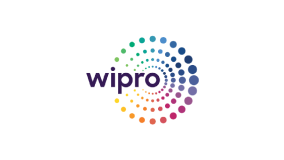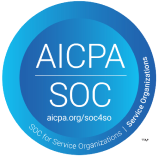Introduction
In today's fast-paced tech landscape, software testing is more crucial than ever. The era of purely manual testing is long gone—automation has transformed the software development lifecycle, allowing teams to streamline workflows, save time, and enhance productivity.
If you've primarily relied on Selenium, it's time to explore a broader range of modern automation testing tools. The market is filled with frameworks designed to help you build and execute efficient, reliable test cases.
In this blog, we’ll explore 20 leading automation testing tools that are redefining software quality. Whether you're looking for faster execution, better integrations, or AI-driven testing, this guide will help you choose the right tool for your business needs.
Why Automation Testing Matters
Ensuring software quality is not just about detecting defects—it’s about preventing them. Unlike traditional manual testing, which primarily identifies bugs after development, automation testing integrates seamlessly into the software development lifecycle (SDLC) to catch issues early.
By automating repetitive tasks, teams can optimize performance, accelerate product releases, and reduce costly post-release fixes. With the increasing complexity of modern applications, automation testing is essential for delivering reliable, high-performing software that meets user expectations.
Key Benefits of Automation Testing
Automation testing offers several advantages that enhance software quality and streamline development:
- Enhanced Quality: Identifies and resolves defects early, ensuring a stable and high-performing application.
- Faster Testing Cycles: Automates repetitive tasks, reducing testing time and accelerating product releases.
- Cost Efficiency: Detects issues during development, minimizing expensive post-release fixes.
- Early Issue Detection: Catches potential bugs before they become critical, improving overall reliability.
- Consistent Performance: Ensures software functions as expected under various conditions and workloads.
- Optimized Security: Identifies vulnerabilities, protecting user data and preventing security threats.
- Regulatory Compliance: Helps meet industry standards and legal requirements, reducing compliance risks.
- Improved User Experience: Enhances usability and functionality, leading to higher user satisfaction.
- Continuous Improvement: Provides valuable insights for refining software and optimizing future releases.
By integrating automation testing, teams can develop and deliver robust, efficient, and user-friendly software with confidence.
20 Leading Automation Testing Tools for 2025
The market offers a wide array of automation testing tools, each with distinct features and solutions. To select the best tool for your business, consider your specific project requirements. Here's a curated list of 20 top tools, categorized for clarity:
1. HeadSpin
Overview: HeadSpin is a comprehensive testing platform that offers automated and manual testing capabilities across various devices and locations. It excels in providing real-world testing environments, making it invaluable for large-scale and diverse applications.
Key Features:
- Global Device Infrastructure: Access thousands of real devices in over 90 locations worldwide, enabling testing under real user conditions.
- AI-Powered Insights: Leverage AI and machine learning to analyze test results intelligently, speeding up issue detection and resolution.
- Seamless Integration: Integrates effortlessly into CI/CD workflows, supporting both pre-release and post-release testing phases.
- Real-Time Performance Monitoring: Provides actionable insights into performance bottlenecks with recommendations for fixes.
2. Selenium
Overview: Selenium is an open-source suite of tools and libraries designed for automating web browsers. It is renowned for its flexibility and extensive community support, making it a staple in web application testing.
Key Features:
- Cross-Browser Compatibility: Supports multiple browsers, including Chrome, Firefox, Safari, and Internet Explorer.
- Multi-Language Support: Allows writing test scripts in various programming languages such as Java, Python, C#, and Ruby.
- Robust Community and Ecosystem: Offers a wealth of plugins, frameworks, and resources contributed by a vibrant community.
- Integration Capabilities: Seamlessly integrates with tools like TestNG and JUnit for managing test cases and generating reports.
3. Telerik Test Studio
Overview: Telerik Test Studio is a user-friendly platform for testing web, desktop, and mobile applications. It simplifies test creation with its intuitive interface and offers robust features for comprehensive testing.
Key Features:
- Intuitive Record and Playback: Facilitates easy test creation without extensive coding knowledge.
- Cross-Platform Support: Enables testing across web, desktop, and mobile platforms.
- Visual Studio Integration: Provides a plugin for seamless integration with Visual Studio, enhancing the development workflow.
- Advanced Debugging and Reporting: Offers detailed logs and reports to aid in identifying and resolving issues efficiently.
4. Playwright
Overview: Developed by Microsoft, Playwright is an open-source automation library that allows for end-to-end testing of web applications across multiple browsers using a single API.
Key Features:
- Multi-Browser Support: Automates Chromium, Firefox, and WebKit browsers, ensuring broad coverage.
- Auto-Wait Mechanism: Automatically waits for elements to be ready before executing actions, reducing flakiness in tests.
- Headless Mode: Supports headless execution for faster test runs and integration into CI/CD pipelines.
- Network Interception: Allows monitoring and modifying network traffic during test execution.
5. Appium
Overview: Appium is an open-source tool designed for automating mobile applications on Android and iOS platforms. It supports native, hybrid, and mobile web applications, providing a flexible solution for mobile testing.
Key Features:
- Cross-Platform Automation: Enables writing tests for multiple platforms using the same API.
- Language Agnostic: Supports various programming languages, including Java, JavaScript, Python, and Ruby.
- No App Modification Required: Tests can interact with apps without requiring access to source code or recompilation.
- Active Community Support: Benefits from a robust community that contributes to its continuous improvement and provides extensive resources.
6. Cypress
Overview: Cypress is a modern front-end testing tool built for the web. It is known for its developer-friendly setup and real-time reloading, making it a favorite among front-end developers.
Key Features:
- Time Travel: Captures snapshots during test execution, allowing developers to see what happened at each step.
- Real-Time Reloads: Automatically reloads tests upon saving changes, streamlining the development process.
- Network Traffic Control: Provides control over network requests and responses, facilitating comprehensive testing scenarios.
- Debuggability: Offers readable error messages and stack traces, simplifying the debugging process.
7. TestComplete
Overview: TestComplete is a comprehensive automated UI testing tool for desktop, mobile, and web applications. It supports a wide range of technologies and offers both script and scriptless options for test creation.
Key Features:
- AI-Powered Object Recognition: Utilizes AI to accurately identify dynamic UI elements, reducing maintenance efforts.
- Flexible Scripting Options: Supports multiple scripting languages, including JavaScript, Python, and VBScript.
- Parallel Test Execution: Allows running tests simultaneously across multiple environments to expedite testing cycles.
- Robust Reporting and Analysis: Provides detailed test logs and customizable reports for in-depth analysis.
8. Puppeteer
Overview: Puppeteer is a Node.js library that provides a high-level API to control Chrome or Chromium browsers over the DevTools Protocol. It's widely used for automating tasks such as UI testing, web scraping, and performance analysis.
Key Features:
- Headless and Headful Modes: Supports both headless (no UI) and headful (with UI) modes, allowing for flexible testing scenarios.
- Automated Form Submission and UI Testing: Enables automation of user interactions like form submissions, clicks, and keyboard inputs, facilitating comprehensive UI testing.
- Performance Analysis: Allows capturing of timeline traces to diagnose performance issues, providing insights into bottlenecks.
- PDF and Screenshot Generation: Can generate PDFs and screenshots of web pages, useful for content validation and visual regression testing.
9. Cucumber
Overview: Cucumber is an open-source tool designed for Behavior-Driven Development (BDD). It allows teams to write test scenarios in plain language using the Gherkin syntax, promoting collaboration between technical and non-technical stakeholders.
Key Features:
- Behavior-Driven Development Support: Facilitates writing tests based on user stories and business requirements, aligning development with business goals.
- Readable Test Cases: Tests are written in simple English sentences, improving maintainability and making it easier to update tests as requirements change.
- Automated Testing Integration: Integrates with various testing tools and frameworks (e.g., Selenium, Cypress) to automate tests, helping identify issues early in the development cycle.
- Tags and Hooks: Offers features like tags to organize tests into categories and hooks to set up conditions before or after test runs, enhancing test management.
10. Tricentis Tosca
Overview: Tricentis Tosca is a comprehensive automation tool for web, API, mobile, and desktop testing. It employs a model-based testing approach, enabling efficient test creation and maintenance.
Key Features:
- Model-Based Test Automation: Allows for the creation of reusable test components, reducing redundancy and maintenance efforts.
- Service Virtualization: Simulates dependent systems that are unavailable or costly to access, enabling continuous testing.
- API Testing: Provides robust support for API testing, including API scanning and test generation.
- CI/CD Integration: Seamlessly integrates with continuous integration and delivery pipelines, supporting DevOps practices.
11. Taiko
Overview: Taiko is an open-source browser automation tool built by ThoughtWorks. It simplifies test creation with a straightforward API and is designed to handle modern web applications.
Key Features:
- Simple and Clear Syntax: Offers an easy-to-understand API, making test scripts more readable and maintainable.
- Smart Selectors: Automatically detects elements on the page, reducing the need for manual selector management.
- Dynamic Content Handling: Efficiently manages applications with dynamic content and XHR requests.
- Interactive Recorder: Provides an interactive recorder for capturing user actions, facilitating quick test script generation.
12. Ranorex Studio
Overview: Ranorex Studio offers comprehensive GUI testing for web, mobile, and desktop applications. It provides both low-code automation and a full-featured IDE for advanced users.
Key Features:
- Broad Technology Support: Supports a wide range of technologies, including legacy applications, ensuring extensive test coverage.
- Codeless Test Creation: Allows for recording and playback of tests, enabling users without coding expertise to create automated tests.
- Robust Object Recognition: Utilizes RanoreXPath for reliable identification of UI elements, even in dynamic applications.
- CI/CD Integration: Integrates with popular CI/CD tools, facilitating continuous testing in development pipelines.
13. Espresso
Overview: Espresso is a testing framework for Android applications, developed by Google. It enables developers to write concise and reliable UI tests for Android apps.
Key Features:
- Simple API: Provides a straightforward API for creating UI tests, reducing the learning curve for developers.
- Synchronous Test Execution: Automatically synchronizes test actions with the UI thread, ensuring reliable and stable tests.
- Flexible Assertions: Offers a range of built-in matchers and allows for custom assertions, enhancing test validation capabilities.
- Integration with Android Studio: Seamlessly integrates with Android Studio, providing tools for recording and running tests within the development environment.
14. Postman
Overview: Postman is a widely used tool for API development and testing. It provides a user-friendly interface for designing, testing, and documenting APIs, streamlining the API development process.
Key Features:
- Comprehensive API Testing: Supports various types of testing, including functional, integration, and regression testing for APIs.
- Automated Test Scripts: Allows for the creation of test scripts using JavaScript, enabling automated testing workflows.
- Mock Servers: Enables the creation of mock servers to simulate API responses, facilitating testing in isolated environments.
- Collaboration Features: Offers tools for team collaboration, including shared workspaces and version control for API collections.
15. XCUITest
Overview: XCUITest is Apple's UI testing framework for iOS applications, built on top of XCTest. It enables developers to write and execute automated UI tests within Xcode.
Key Features:
- Native Integration: Seamlessly integrated into Xcode, providing a cohesive environment for developing, testing, and debugging iOS applications.
- Swift and Objective-C Support: Allows developers to write tests in both Swift and Objective-C, accommodating various coding preferences and existing codebases.
- UI Recording: Offers a recording feature that captures user interactions, which can be converted into test scripts, simplifying the test creation process.
16. Robot Framework
Overview: Robot Framework is a versatile, open-source automation framework ideal for acceptance testing and robotic process automation (RPA). It employs a keyword-driven approach, enhancing readability and maintainability of test cases.
Key Features:
- Keyword-Driven Testing: Facilitates the creation of readable and reusable test cases using keywords, promoting collaboration among team members.
- Extensibility: Supports numerous libraries and tools, such as SeleniumLibrary for web testing and AppiumLibrary for mobile testing, allowing for expanded testing capabilities.
- Data-Driven Testing: Enables the execution of test cases with multiple data sets, improving test coverage and efficiency.
- Integration with CI/CD Pipelines: Seamlessly integrates with continuous integration and delivery tools, supporting automated testing workflows.
17. Gauge
Overview: Gauge is a free, open-source test automation framework designed for acceptance and regression testing. It emphasizes simplicity and scalability, making it suitable for a wide range of applications.
Key Features:
- Markdown-Based Specifications: Allows writing test specifications in Markdown, enhancing readability and ease of maintenance.
- Multi-Language Support: Supports multiple languages, including Java, C#, and JavaScript, catering to diverse development environments.
- Modular Architecture: Features a modular design with plugins for various functionalities, enabling customization and scalability.
- Robust Ecosystem: Offers a rich ecosystem of plugins and integrations, extending its capabilities to meet various testing needs.
18. Sahi Pro (Open-Source Version)
Overview: Sahi's open-source version is a cross-browser testing tool primarily aimed at automating web applications. It is known for its simplicity and effectiveness in handling complex web applications.
Key Features:
- Browser Agnostic Automation: Provides consistent automation across different browsers, ensuring broad compatibility.
- Distributed Execution: Supports distributed test execution, enabling parallel testing and reducing test cycle times.
- Simple Scripting Language: Utilizes an easy-to-learn scripting language, lowering the barrier to entry for test automation.
- Inbuilt Reporting: Offers built-in reporting features, providing clear insights into test results and facilitating debugging.
19. TestNG
Overview: TestNG is a powerful, open-source testing framework inspired by JUnit and NUnit. It is designed to cover a wide range of testing needs, from unit testing to end-to-end integration testing.
Key Features:
- Annotations and Multithreading: Provides a rich set of annotations and supports multithreaded execution, enhancing test organization and performance.
- Flexible Test Configuration: Allows for flexible test configurations, including grouping, sequencing, and parameterization of tests.
- Powerful Reporting: Generates detailed reports, offering insights into test execution and facilitating result analysis.
- Seamless Integration: Integrates smoothly with build tools like Maven and Ant, as well as continuous integration systems, supporting automated build and test processes.
20. Jest
Overview: Jest is an open-source testing framework primarily used for JavaScript and React-based applications. Developed by Facebook, it is renowned for its simplicity and performance.
Key Features:
- Zero Configuration Setup: Offers a zero-configuration setup, allowing developers to start testing without extensive configuration.
- Parallel Test Execution: Runs tests in parallel, significantly reducing test execution time.
- Built-in Mocking and Code Coverage: Provides built-in capabilities for mocking modules and functions, as well as generating code coverage reports, enhancing test reliability and insight.
- Snapshot Testing: Supports snapshot testing, enabling the capture and comparison of component snapshots to detect unintended changes.
Selecting the Right Automated Testing Tool
Choosing the right automation testing tool is critical for ensuring software quality while accelerating release cycles. The best tools streamline test creation, execution, and maintenance, offering a centralized view of test results and analytics.
As Agile and DevOps practices become standard, having a clear evaluation strategy for automation tools is essential. Here are some key considerations when selecting the right tool for your team:
- Desired Features: Does the tool offer capabilities like cross-browser testing, mobile automation, API testing, or AI-powered enhancements?
- Primary Users: Will it be used mainly by developers, testers, or a combination of both?
- Integration Capabilities: Can it seamlessly integrate with CI/CD pipelines, DevOps toolchains, and version control systems?
- Ease of Maintenance: How simple is it to maintain test scripts and reuse automation assets?
- Cost Considerations: Does the tool align with your team's budget, including licensing and maintenance expenses?
- Technical Support: What kind of community or enterprise support is available for troubleshooting and continuous improvement?
There is no universal solution for test automation—each organization must select a tool that aligns with its specific needs, development practices, and business goals.
Read: Top 14 Automated Mobile Testing Tools and Frameworks
Optimizing Automation Testing with HeadSpin
While selecting an automation testing tool, integrating a platform like HeadSpin enhances efficiency by providing:
- Real Device Testing for accurate, real-world test results.
- AI-Powered Performance Insights to detect bottlenecks and optimize applications.
- Seamless CI/CD Integration for continuous testing and deployment.
With its global device cloud, AI-driven analytics, and real-time performance monitoring, HeadSpin complements other automation tools by offering end-to-end testing capabilities, making it an excellent addition to any modern testing stack.
Key Takeaways
Selecting the right automation testing tool requires careful evaluation of your business needs, team capabilities, and integration requirements. Some tools may fall short in areas like cross-browser compatibility, scalability, or CI/CD integration, which are critical for modern development workflows.
To ensure successful test automation, consider:
- Feature Compatibility – Does the tool support your testing needs, such as web, mobile, or API testing?
- Seamless Integrations – Can the tool work smoothly with your CI/CD pipeline, version control, and project management tools?
- Scalability – Does it allow parallel execution and cloud-based testing to accelerate test cycles?
- Team Expertise & Support – Is the tool easy to adopt, and does it have robust documentation or community support?
For an enhanced automation strategy, integrating your chosen tool with HeadSpin can provide real-device testing, performance analytics, and AI-powered insights. While traditional automation tools handle functional testing, HeadSpin ensures that non-functional aspects like performance, network conditions, and user experience are also optimized. This comprehensive approach helps teams achieve faster releases with higher-quality software.
FAQs
Q1. How does HeadSpin differ from traditional automation testing tools?
Ans: Unlike traditional tools that focus solely on functional testing, HeadSpin provides real-device testing, network analysis, AI-driven performance insights, and cross-platform testing in real-world conditions. It also integrates seamlessly with CI/CD pipelines for continuous testing.
Q2. Can HeadSpin be used for cross-browser and cross-platform testing?
Ans: Absolutely. HeadSpin supports cross-browser testing on real desktop and mobile browsers, as well as cross-platform testing on Android, iOS, and web applications.













































-1280X720-Final-2.jpg)






